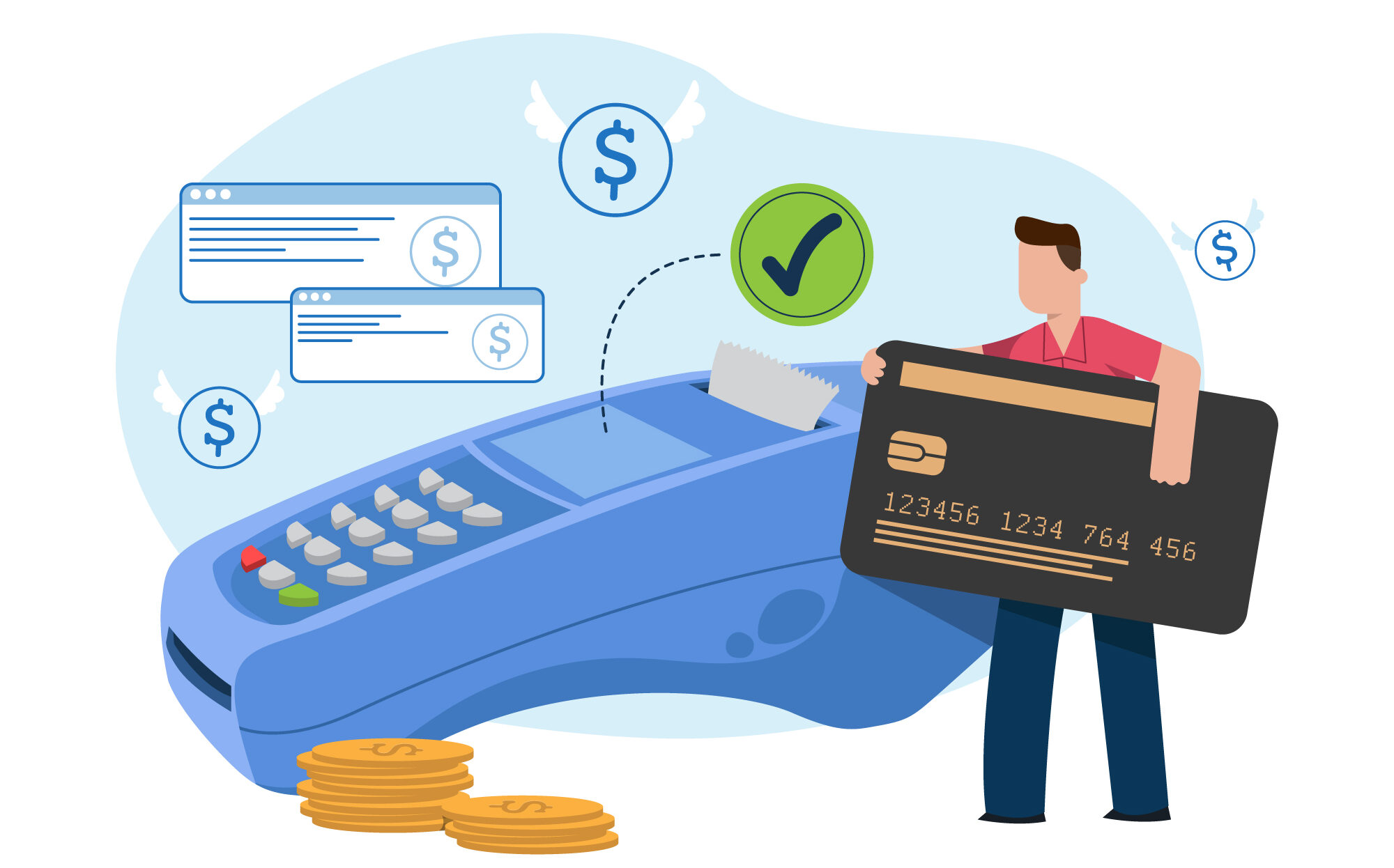Handling Customer Transactions: Best Practices for Startups
- 1 Understanding Transaction Types
- 1.1 1. Cash Transactions:
- 1.2 2. Credit Card Transactions:
- 1.3 3. Debit Card Transactions:
- 1.4 4. Online and Mobile Banking Transactions:
- 1.5 5. E-Wallet Transactions:
- 1.6 6. ACH (Automated Clearing House) Transactions:
- 1.7 7. Wire Transfers:
- 1.8 8. Mobile Money Transactions:
- 1.9 9. Contactless/NFC Transactions:
- 1.10 10. Cryptocurrency Transactions:
- 1.11 11. Check Transactions:
- 2 Best Practices for Managing Transactions
- 2.1 1. Security Measures:
- 2.2 2. Fraud Prevention:
- 2.3 3. Compliance and Regulation:
- 2.4 4. Transparent Communication:
- 2.5 5. Data Privacy:
- 2.6 6. Efficient Record Keeping:
- 2.7 7. Scalability and Flexibility:
- 2.8 8. Customer Support and Dispute Resolution:
- 2.9 9. Regular Audits and Monitoring:
- 2.10 10. Integration with Analytics:
- 2.11 11. Disaster Recovery and Redundancy:
- 2.12 12. Monitoring and Reporting
- 3 Conclusion
For startups, managing customer transactions is critical to building a successful business. This article aims to provide startups with best practices for handling customer transactions efficiently and effectively.
Understanding Transaction Types
Before delving into best practices, startups need to understand the various customer transactions they may encounter. This includes credit and debit card payments, bank transfers, direct debits, and digital wallet payments.
1. Cash Transactions:
The physical exchange of coins and banknotes defines cash transactions. This method of payment immediately involves no intermediary processing. It is widely accepted for in-store purchases, providing a tangible and universally recognized form of currency.
2. Credit Card Transactions:
Payments made using credit cards involve a deferred payment mechanism. Users can spend up to a predefined credit limit; the payment occurs later. Typical scenarios include online shopping and retail purchases, where the convenience of credit enhances purchasing power.
3. Debit Card Transactions:
Direct debit is a popular method for recurring payments. Startups often ask, “How long does a direct debit take to clear?” Usually, processing a direct debit transfer might extend to a maximum of three working days. Businesses must account for this timeframe in their financial planning.
4. Online and Mobile Banking Transactions:
Digital transactions through online or mobile banking platforms have become increasingly popular. Offering convenience, speed, and electronic record-keeping, this method includes various activities such as fund transfers, bill payments, and online purchases, contributing to the shift towards a cashless society.
5. E-Wallet Transactions:
Electronic or digital wallets store value and enable contactless payments. Services like Apple Pay, Google Pay, and PayPal facilitate transactions without physical cash or cards. E-wallets offer a secure and efficient way to make payments in various contexts, including in-store and online transactions.
6. ACH (Automated Clearing House) Transactions:
Automated Clearing House transactions involve the electronic transfer of funds between bank accounts. Often used for more significant transactions, ACH transactions utilize batch processing, enabling efficient and cost-effective movement of funds, including direct deposits and recurring bill payments.
7. Wire Transfers:
Wire transfers facilitate real-time electronic fund transfers between banks. Wire transfers are widely employed for international transactions because of their speed and reliability. Businesses and individuals often use wire transfers for cross-border payments and large transactions requiring immediate settlement.
8. Mobile Money Transactions:
Mobile money transactions provide a viable solution in regions with limited banking infrastructure. Conducted through mobile devices, services like M-Pesa in Kenya and GCash in the Philippines enable financial transactions, including person-to-person transfers and utility payments, using mobile platforms.
9. Contactless/NFC Transactions:
Contactless transactions involve payments made by tapping or waving a contactless card or device. Utilizing Near Field Communication (NFC) technology, this method offers quick and secure transactions. Contactless payments are prevalent in various contexts, from public transportation to retail purchases.
10. Cryptocurrency Transactions:
Cryptocurrency transactions utilize digital or virtual currencies and blockchain technology. Decentralized and often pseudonymous, cryptocurrencies like Bitcoin and Ethereum enable secure and transparent transactions, appealing to those seeking alternative financial systems.
11. Check Transactions:
Check transactions involve payments through a written order instructing a bank to pay a specified amount to a recipient. While paper-based and comparatively slower, checks are still used for various purposes, such as personal transactions and business payments, especially in contexts where digital methods may not be prevalent.
Understanding the nuances of each payment transaction type is crucial in navigating the evolving financial technology landscape. This knowledge ensures that businesses, financial institutions, and individuals can make informed decisions, promoting secure, efficient, and compliant transactions.
Best Practices for Managing Transactions
1. Security Measures:
Ensuring the security of transactions is paramount. Implement robust encryption protocols to protect sensitive information during data transmission. Utilize secure and trusted payment gateways to safeguard financial details. Regularly update security systems and conduct thorough risk assessments to identify and address potential vulnerabilities.
2. Fraud Prevention:
Implement proactive measures to prevent fraud. Employ real-time fraud detection tools that analyze transaction patterns and flag suspicious activities. Set up multi-factor authentication to add an extra layer of security. Educate users about phishing scams and encourage using secure passwords to minimize the risk of unauthorized transactions.
3. Compliance and Regulation:
Adhere to relevant financial regulations and compliance standards. Stay informed about changes in legislation to ensure that your transaction processes align with legal requirements. Regularly audit transaction records to verify compliance and maintain transparent communication with regulatory bodies to address any concerns promptly.
4. Transparent Communication:
Establish clear communication channels with customers regarding transaction processes. Provide detailed information about fees, processing times, and any potential issues that may arise. Transparent communication builds trust and reduces the likelihood of disputes, fostering a positive customer experience.
5. Data Privacy:
Prioritize the privacy of customer data. Implement strict data protection policies and comply with data privacy regulations. Obtain explicit consent for collecting and using customer information and regularly update privacy policies. This protects customers’ sensitive data and enhances your organization’s reputation.
6. Efficient Record Keeping:
Maintain accurate and organized records of all transactions. This includes invoices, receipts, and payment confirmations. Efficient record-keeping facilitates easier reconciliation, auditing, and resolution of any discrepancies. Consider implementing automated systems for streamlined record management.
7. Scalability and Flexibility:
Design transaction systems with scalability in mind. As your business grows, the transaction volume may increase, and the system should be able to handle the higher load seamlessly. Additionally, build flexibility into your processes to adapt to evolving payment methods, technologies, and customer preferences.
8. Customer Support and Dispute Resolution:
Offer accessible and responsive customer support for transaction-related inquiries. Establish a transparent and efficient dispute resolution process to address customer concerns promptly. A proactive approach to resolving issues enhances customer satisfaction and loyalty.
9. Regular Audits and Monitoring:
Conduct regular audits of your transaction processes and systems. This includes financial audits, security audits, and compliance audits. Continuous monitoring allows you to identify potential issues early on and ensures that your transaction management remains efficient, secure, and compliant.
10. Integration with Analytics:
Integrate transaction data with analytics tools to gain valuable insights. Analyzing transaction patterns can help identify trends, optimize processes, and make informed business decisions. Leverage data analytics to enhance customer experience, detect potential issues, and improve overall transaction efficiency.
11. Disaster Recovery and Redundancy:
Implement robust disaster recovery plans to ensure business continuity during system failures or unexpected disruptions. Utilize redundant systems and data backup protocols to minimize downtime. Regularly test and update these contingency plans to maintain resilience in the face of unforeseen challenges.
12. Monitoring and Reporting
Monitoring transactions helps identify trends, manage cash flow, and detect fraudulent activities. Accurate reporting is also essential for financial tracking and decision-making.
By adopting these best practices, businesses can build a secure, efficient, and customer-centric transaction management system that meets regulatory requirements and enhances overall operational effectiveness.
Conclusion
Efficiently handling customer transactions is essential for the growth and sustainability of startups. By understanding different transaction types, implementing best practices, and continually adapting to new technologies and customer preferences, startups can ensure a smooth and secure customer transaction experience. This approach builds trust and lays a solid foundation for long-term success.



















